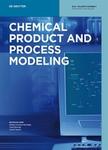版权所有:内蒙古大学图书馆 技术提供:维普资讯• 智图
内蒙古自治区呼和浩特市赛罕区大学西街235号 邮编: 010021

作者机构:Univ Ottawa Dept Chem & Biol Engn Ottawa ON K1N 6N5 Canada Univ Antioquia Dept Ingn Quim SIDCOP Res Grp Medellin Colombia
出 版 物:《CHEMICAL PRODUCT AND PROCESS MODELING》 (Chem. Prod. Process Model.)
年 卷 期:2022年第17卷第1期
页 面:29-53页
核心收录:
学科分类:081702[工学-化学工艺] 0817[工学-化学工程与技术] 08[工学]
主 题:decision variables objective functions pareto domain process optimization
摘 要:Due to the highly competitive market and increasingly stringent environmental regulations, it is paramount to operate chemical processes at their optimal point. In a typical process, there are usually many process variables (decision variables) that need to be selected in order to achieve a set of optimal objectives for which the process will be considered to operate optimally. Because some of the objectives are often contradictory, Multi-objective optimization (MOO) can be used to find a suitable trade-off among all objectives that will satisfy the decision maker. The first step is to circumscribe a well-defined Pareto domain, corresponding to the portion of the solution domain comprised of a large number of non-dominated solutions. The second step is to rank all Paretooptimal solutions based on some preferences of an expert of the process, this step being performed using visualization tools and/or a ranking algorithm. The last step is to implement the best solution to operate the process optimally. In this paper, after reviewing the main methods to solve MOO problems and to select the best Paretooptimal solution, four simple MOO problems will be solved to clearly demonstrate the wealth of information on a given process that can be obtained from the MOO instead of a single aggregate objective. The four optimization case studies are the design of a PI controller, an SO2 to SO3 reactor, a distillation column and an acrolein reactor. Results of these optimization case studies show the benefit of generating and using the Pareto domain to gain a deeper understanding of the underlying relationships between the various process variables and performance objectives.